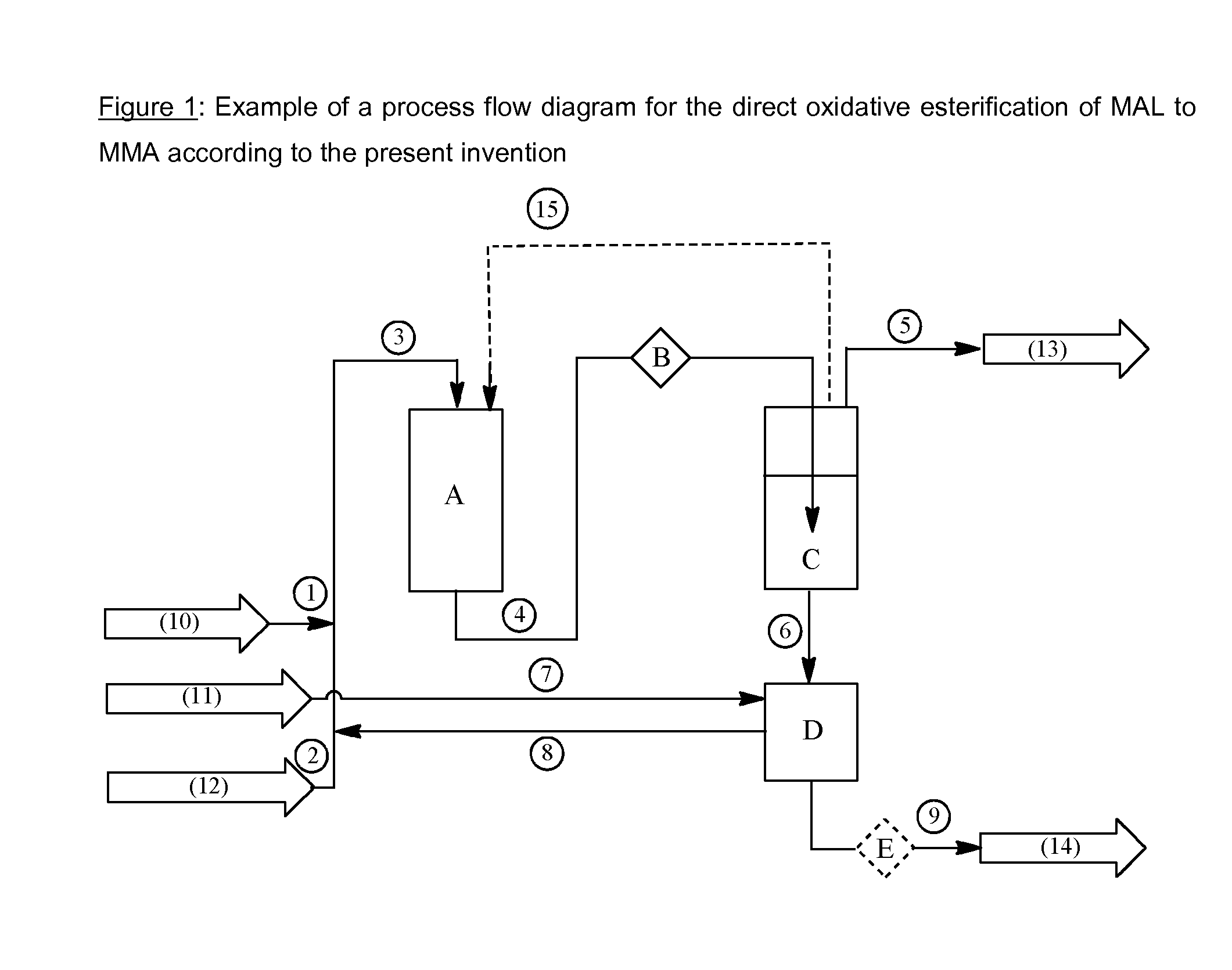Process for producing methyl methacrylate
a technology of methyl methacrylate and manufacturing process, which is applied in the direction of physical/chemical process catalysts, metal/metal-oxide/metal-hydroxide catalysts, hydrocarbon preparation catalysts, etc., can solve the problems of high cost of treatment, low yield, and assumed high energy consumption
- Summary
- Abstract
- Description
- Claims
- Application Information
AI Technical Summary
Benefits of technology
Problems solved by technology
Method used
Image
Examples
example 2
on of MMA via Direct Oxidative Esterification of MAL
[0066]A mixture of 30.9 wt % of MAL and 69.1 wt % of methanol was brought to pH=7 by addition of a 1% sodium hydroxide solution in methanol. This neutralized mixture was then fed at a flow rate of 20.9 g / h along with O2 / N2 gas mixture (7 vol % O2) at 6 bar to a tube reactor with outer heat exchanger (80° C.). The residual O2 content in off-gas was adjusted to 4 vol %. The reactor contained 15 g of catalyst 1. By continuous addition of a 1% sodium hydroxide solution in methanol to the neutralization vessel, the pH was maintained at pH 7 in the system. The ratio of over line 12 recycled mixture and product output 11 was R / P=10. The product mixture was analyzed by gas chromatography. Table 1 shows the results obtained after 73 h having the MMA production process running, as well as after 512 h.
example 3
on of MMA via Direct Oxidative Esterification of MAL with Lower Feed Rate and Lower MAL Concentration Within the Feed
[0067]Example 3 was carried out under the same operating conditions as Example 2, but with a feed flow rate of 15.1 g / h, and a feed concentration of 45.3 wt % of MAL and 54.7 wt % of methanol.
PUM
| Property | Measurement | Unit |
|---|---|---|
| Temperature | aaaaa | aaaaa |
| Percent by mass | aaaaa | aaaaa |
| Percent by mass | aaaaa | aaaaa |
Abstract
Description
Claims
Application Information
 Login to View More
Login to View More - R&D
- Intellectual Property
- Life Sciences
- Materials
- Tech Scout
- Unparalleled Data Quality
- Higher Quality Content
- 60% Fewer Hallucinations
Browse by: Latest US Patents, China's latest patents, Technical Efficacy Thesaurus, Application Domain, Technology Topic, Popular Technical Reports.
© 2025 PatSnap. All rights reserved.Legal|Privacy policy|Modern Slavery Act Transparency Statement|Sitemap|About US| Contact US: help@patsnap.com

